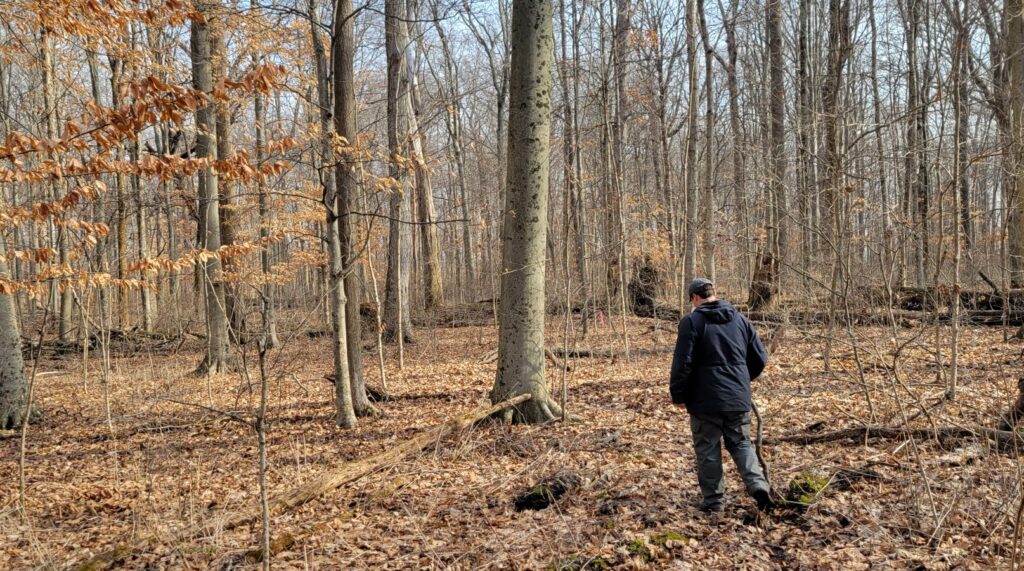A gray overcast sky blankets much of the Midwest as the January sun rises and sets. This seems to be the norm as the seemingly motionless winter continues.
I walk the dormant woodlands nearly every day, but admittedly even I lose motivation when each step moves over mushy soil and through a dull earth tone forest. How do we continue our enjoyment of outdoor recreation as winter lays heavy over Indiana? Certainly, there is no one answer to cure this affliction. But for me, sometimes it is as simple as making an effort to truly observe winter’s nature and take note of its curious details.
Winter hikes can be particularly monotone. However, I have come to appreciate the subtle pops of color added by the discrete fungus that decorates downed logs and standing snags. It is true that there are considerably fewer fruiting fungi during the dormant season, but some do stick around. Turkey tails are an exceedingly common trail sighting on downed logs. Their vibrant striped colors stand out when most other fungi do not dare brave the winter frost. These colorfully capped mushrooms offer a welcomed visual reprieve against decaying trees.
Indiana forests are mainly deciduous with trees shedding their leaves annually. Journeying deeper into a forest, you may notice trees that seem to have missed the memo. Some tree species defiantly cling to the memory of summer by holding onto their browned leaves.
This may appear to be an act of rebellion, but it is a common process known as “marcescence.” That means certain plants retain the dead parts that other plants typically shed. The brown leaves on trees that remain loosely attached to branches do eventually fall off as spring approaches and the new leaf buds begin to open.
Beech trees are a common example of marcescence, but certain oak species and hornbeam also take part in this process. There is much debate as to why some species hold onto their dead leaves while most species drop them. However, there is no debate that the fluttering movement of remnant leaves in the wind provides a welcome variance to observant hikers who saunter the winter woods.
One noteworthy calling of dormant woodlands is the overwintering birds that persist throughout the canopy. In my opinion, there is no better time to observe the vivid plumage of cardinals. Their crimson feathers cut through the earth tone woodlands as they perch upon a branch. I also enjoy seeing the pileated woodpecker, whose bright red head and spastic thumping of trees is my favorite to discover on a frosty trail.
The forest may slow down with the gray skies of winter, but nature certainly persists. If you find your love for a great hike waning as the leaves fall, remember that sometimes all it takes to stoke the fire of enthusiasm is a keen sense of observation and curiosity. By paying a little more attention, I know I can always find something to keep me in awe of nature year-round.
If you are looking to discover the percussive pileated woodpecker, turkey tails dappling logs, or towering beech trees clasping their winter leaves, try hiking at Stout Memorial Woodland in Henry County. The massive trees and meandering creek make for an excellent immersive walk. Directions and trail maps to other wonderful winter nature preserves can be found at Red-tail Land Conservancy’s website www.fortheland.org.
Jake Gamble is the Stewardship Manager for Red-tail Land Conservancy. Impassioned by land conservation, he strives to protect and preserve the natural quality of Indiana while inspiring others to do the same.




